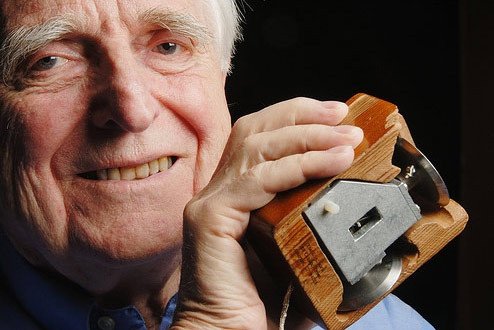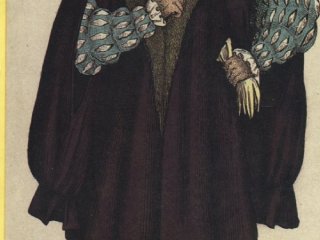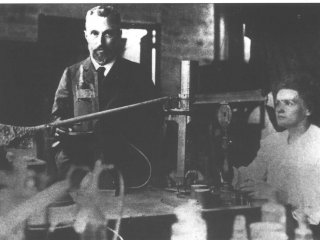
Witty journalists now call Douglas Engelbart “the Mouse King” and “a mountain that gave birth to a mouse.” There’s almost no exaggeration in that: the American engineer deserved his crown, and can absolutely be called “a mountain”. The engineer, not widely known beyond his professional community, generated ideas that gave rise to the whole PC industry. Well, we know it today, but then, in the early 1960s when Engelbart thought about conversations between humans and computers, people had different ideas. The world of computers was torn apart, and the ideas ranged from changing people for machines to facilitating secretaries’ work. The pointy-headed Engelbart invented a concept that rendered to the computer what belonged to it and gave to man what was man’s.
But the computer had to help the humans to broaden the scope of their intellect and give them an instrument for communication with the machine. That was what Engelbart and his fellows at the Stanford University were thinking about. He spent 10-15 years thinking and finally came up with the idea, not only of a mouse but of a whole online system that was many years ahead of its time and therefore underestimated. But he did invent a mouse, or, to be more exact, “an X-Y position indicator for a display system.” That was written in the application he filed to the US Patent Office. On December 9, 1968, the society saw this indicator with their own eyes. During its demonstration at the inventor’s office, one could see a hedgehog-like keyboard under the relator’s left hand, and at his right hand, there was a polished wooden box with buttons and wheels, similar to a deck of cards in size. In private conversations, the inventor called the box a mouse, and it really looked like a mouse with a tail. Later, it emerged that we could have received a pedaled horse or another fancy animal directed with the knee. God saved us from that but doomed computer owners to suffer from the carpal tunnel syndrome. Much later, Engelbart told in an interview that he made experiments with different devices like light feathers or joysticks, but the mouse beat them all.
The inventor was awarded with a 10.000-dollar check, and the National Space Agency which was one of Engelbart’s sponsors, stopped sponsoring him: it decided that the mouse was useless under the conditions of zero gravity. The mouse hid in its whole and waited for its glory hour that came at the beginning of the 1980s. The computer turned its monitor to the man, spat out the card media and quarter-inch cartridges and rejected the services of the programmer translator. The tamed mouse asked for a pad and a special verb to describe its work. The verb was not invented but borrowed: the word “click,” which used to mean a sharp sound produced by two hard objects coming into a contact. The mouse race has its leaders: Logitech alone produces 50 million mouses annually. And the mouse is different from what it was in the 1960s: it lost its tail and acquired a dozen new feature, described by terms difficult to understand for a layman: scrolling functions, click sensitivity, port rate, and even the mysterious chirality, which simply means that the mouse is good either for right-handed or left-handed people.
And there was only one thing, in which Engelbart was mistaken: he thought the name “mouse” would be used temporarily until something finer appeared. But that was in vain: the word was spot-on and stuck to the device for good. And to this day, the mice still run around and don’t scare women and children unlike their live counterparts.
A happy end – a golden rain – came in April 1998. The awards found their hero, thirty years after his feat. 500.000 dollars of the most prestigious Lemelson-MIT prize and 250.000 dollars of the “IT Nobel Prize,” the Turing award, were brought by hundreds of millions of mice that crawl around the tables of computer users around the world. The computer mice that do not spread any computer viruses but cover thousands of kilometers for the noble cause of connecting the human and the machine. The mice invented by Douglas Engelbart long before their time.
























